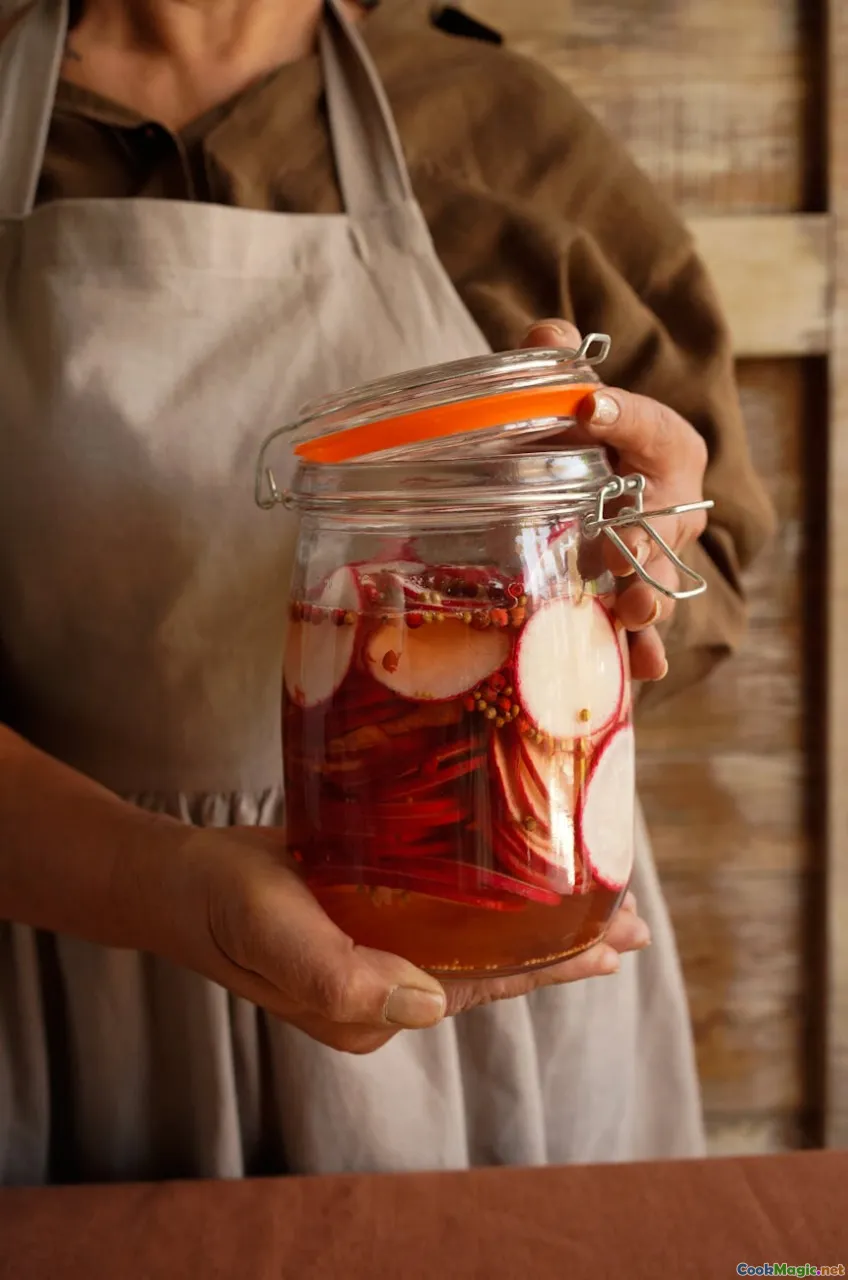Discovering Kyrgyz Pickles and Fermented Foods
8 min read Explore the rich world of Kyrgyz pickles and fermented foods, a vital part of cultural heritage that delights the senses and tells stories of tradition. April 26, 2025 20:00
Discovering Kyrgyz Pickles and Fermented Foods
Imagine a landscape where rugged mountains meet vast steppes, where the wind whispers stories of generations past, and where food is not just sustenance but a profound cultural expression. This is Kyrgyzstan—a land of nomadic traditions, warm hospitality, and a culinary heritage deeply rooted in fermentation and preservation. Among the most fascinating aspects of Kyrgyz cuisine are its pickles and fermented foods, which serve as a bridge connecting the past to the present, offering a sensory journey into the soul of Kyrgyz culture.
The Heart of Kyrgyz Food Culture: Fermentation as a Tradition
Fermentation in Kyrgyzstan is more than a method of preservation; it is an art form passed down through centuries. In the arid climate and mountainous terrain, fermentation was a natural solution to extend the shelf life of seasonal produce and dairy, especially during long winters when fresh ingredients were scarce.
For Kyrgyz nomads and villagers alike, fermented foods are woven into daily life, festivities, and rituals. They symbolize resilience, resourcefulness, and respect for nature’s bounty. From the early days of herding livestock to modern times, fermentation has remained a cornerstone of Kyrgyz culinary identity.
The Varieties of Kyrgyz Pickles and Fermented Delights
1. Kymyz (Fermented Mare’s Milk)
Perhaps the most iconic Kyrgyz fermented beverage, kymyz is made by fermenting mare’s milk using traditional methods that date back centuries. It has a slightly sour, tangy flavor with a hint of sweetness and a fizzy texture that tickles the palate. Kymyz is more than a drink; it is a symbol of hospitality and vitality, often served during festivals and communal gatherings.
2. Qurut (Dried Fermented Milk Balls)
Qurut are small, chewy balls made from fermented, dried milk—either cow or sheep. They have a pungent aroma but a complex, savory taste that adds depth to soups, stews, or even eaten as a snack. Qurut is a prime example of how Kyrgyz people harness fermentation to create intensely flavorsome ingredients that can be stored for months.
3. Pickled Vegetables and Herbs
In Kyrgyz households, seasonal vegetables such as carrots, cabbage, and radishes are transformed into vibrant, tangy pickles. These are often flavored with local herbs like dill, wild thyme, or coriander seeds. The pickling process involves immersing vegetables in brine—sometimes with fermented garlic or chili—allowing the flavors to develop and intensify over weeks.
4. Fermented Fruits
Fruits like apricots, cherries, and apples are sometimes fermented into mildly alcoholic or vinegary preserves. These fermented fruits are enjoyed as snacks, used in cooking, or mixed into dairy products, adding a layer of complexity and a burst of flavor.
The Art and Technique of Kyrgyz Fermentation
The Preparation Process
Kyrgyz fermentation techniques are often simple yet highly effective. Vegetables are washed and chopped before being submerged in a saltwater brine, sometimes infused with wild herbs or spices. Dairy-based ferments like qurut are made by fermenting milk in traditional leather or wooden containers, allowing natural lactobacilli to work their magic.
The Fermentation Environment
The cool mountain air and natural microflora play a crucial role in the fermentation process. Traditionally, fermentation vessels are kept in cool, dark places—cellars, underground pits, or shaded porches—to control temperature and prevent spoilage.
The Role of Time
Fermentation is an act of patience. Some pickles require weeks to develop their full flavor, while others, like qurut, are dried and cured over months. This waiting period imbues the foods with a depth of flavor that is hard to replicate with modern quick-preservation methods.
Personal Encounters and Cultural Significance
During my visit to Kyrgyzstan, I was fortunate to partake in a traditional feast in a yurt nestled in the mountains. The aroma of fermenting dairy and pickled vegetables filled the air, a testament to the enduring importance of these foods.
One memorable moment was tasting freshly made qurut, which had a surprisingly complex flavor—earthy, tangy, with a hint of saltiness. It was accompanied by a warm bowl of shorpo (Kyrgyz meat soup), where the fermented balls added a delightful umami richness.
The Kyrgyz people have a deep respect for their fermented foods, often sharing stories about their origins and the skills involved in their preparation. These foods are more than nourishment; they are living history, cultural identity, and a source of communal pride.
Modern Takes and Preservation of Tradition
Today, there is a renewed interest among Kyrgyz youth and culinary enthusiasts to preserve and innovate with these age-old fermentation techniques. Local artisans and small-scale producers are experimenting with organic ingredients and modern packaging, ensuring that these traditional flavors reach a wider audience.
At the same time, efforts are underway to document and teach these methods through workshops and cultural programs, recognizing that these foods are an integral part of Kyrgyz heritage.
Conclusion: An Invitation to Explore
Kyrgyz pickles and fermented foods are a testament to the resilience and ingenuity of a nomadic culture that has thrived through centuries of environmental challenges. They offer a taste of history, a connection to nature, and an invitation to savor the flavors born from patience and tradition.
Next time you encounter fermented foods from Kyrgyzstan, take a moment to appreciate their story—each bite is a celebration of life, endurance, and the timeless art of fermentation. Whether you’re a culinary adventurer or a cultural enthusiast, these foods promise a rich, sensory experience that lingers long after the last taste.
Immerse yourself in the authentic flavors of Kyrgyzstan and discover the ancient art of fermentation—an enduring testament to the resilience and ingenuity of a nomadic people.









